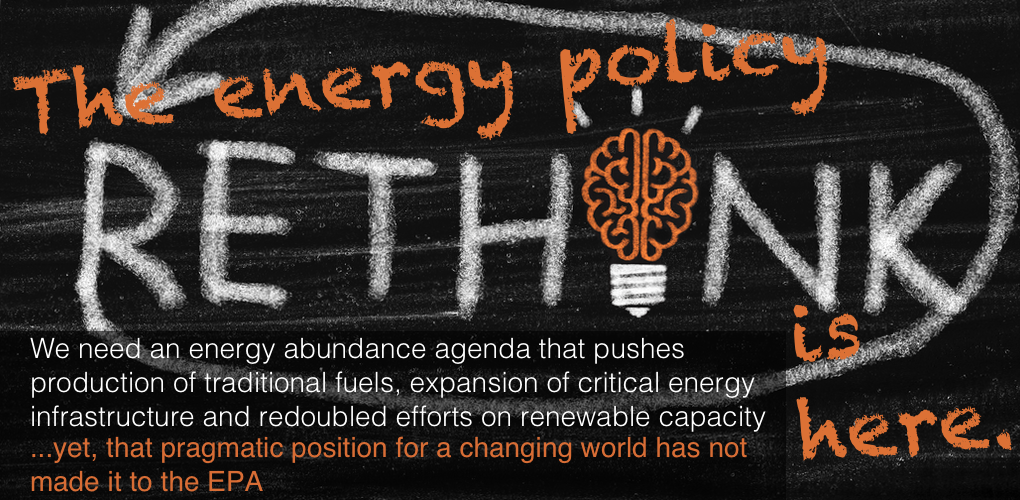
Dismantling Grid Reliability One Rulemaking at a Time
When Environmental Protection Agency (EPA) administrator Michael Regan recently boasted that he doesn’t have to rely on any one policy or rulemaking to achieve his agenda, he turned more than a few heads. He signaled his intent to race forward on a zealous and wide-ranging regulatory program regardless of unsettled questions about EPA’s authority to do so and absent information on the implications of such an agenda on Americans’ electricity bills or the reliability of the grid.
Despite deep concern on Capitol Hill, in many state capitals and the U.S. Supreme Court that the EPA is overstepping its authority, even hijacking the nation’s energy policy, Administrator Regan isn’t trying to allay concerns. Rather, citing the suite of rulemakings he has coming for the coal fleet, he’s saying mission creep isn’t a problem—it’s the point.
There’s nothing remarkable or new about EPA overreach; but what is remarkable is how little acknowledgement there is from EPA that the U.S. is facing an energy affordability and reliability crisis. EPA is plowing ahead despite clear warnings its actions not only pose great danger to the nation’s energy supply but are unworkable.
Consider the EPA’s effort to push forward on finalizing the federal rules for the disposal of coal combustion residuals (CCR) and management of CCR in landfills and impoundments, an opening salvo in EPA rules designed to pressure the coal fleet. The new rules were announced last fall and were immediately met with grave concerns about feasibility. This January, 59 power plants requested deadline extensions for compliance and it’s in these requests we begin to get a sense of the ramifications EPA’s agenda is likely to have on the nation’s grid reliability.
Those Charged with Maintaining Reliability are Deeply Concerned
Comments to EPA from the Midcontinent Independent System Operator (MISO), the grid operator for much of the Midwest, are particularly insightful and a telling example of how out-of-sync EPA’s approach is with on-the-ground reality for those tasked with keeping the lights on. MISO’s comments honed in on just five power plants but are startling nonetheless. MISO concluded, “the loss [due to closure] of any significant portion of the 3.1 GW from the five generators considered… would push resource adequacy coverage of regional demand into dangerous territory.”
MISO also wrote that, “there is very little excess generating capacity (or none at all) to cover demand for electricity, plus the required reserve margin, in the immediate future.” MISO found that, “loss of capacity from the generation at issue cannot be readily replaced by other resources that are currently being processed for participation in MISO’s markets.”
MISO not only warned of grave reliability concerns from the loss of any of the five coal plants in question but went on to explain the two key reasons why. First, that replacement capacity doesn’t offer the same attributes as the resources targeted for closure, namely “flexibility and availability.” And second, that the time to required to integrate new resources into MISO “far exceeds the need for immediate replacement of the resources at issue… in order to maintain grid reliability.”
Putting aside the formality of the comments, the message is abundantly clear: what EPA is asking poses an alarming danger to the reliable delivery of power, and that the agency has waded into issues it simply doesn’t fully grasp.
Of note, MISO felt the need to remind EPA that its assumptions for the feasibility of the rule, particularly pertaining to reinforcing resource adequacy from expected capacity additions of variable, renewable resources, could be dangerously misleading. MISO pointed to the North American Electric Reliability Corporation’s recent Long-term Reliability Assessment which warned, “capacity-based estimates, however, can give a false indication of resource adequacy. Energy risks emerge when variable energy resources… are not supported by flexible resources that include sufficient dispatchable, fuel-assured, and weatherized generation.”
With just one rulemaking, soon to be followed by a full “suite” with the same overarching target, EPA is threatening the glue holding together grid reliability in much of the country. If a new consensus is emerging between energy experts and policymakers that the responsible path to managing the energy transition is to deploy renewable energy on the shoulders of existing firm capacity to ensure fail-safe reliability, EPA is driving just the opposite approach. EPA is determined to take apart the generating capacity and infrastructure we have – and that works – far faster than it can be responsibly replaced. In the words of MISO, without a check to EPA’s agenda, we’re headed for “dangerous territory.”
- On March 23, 2022
